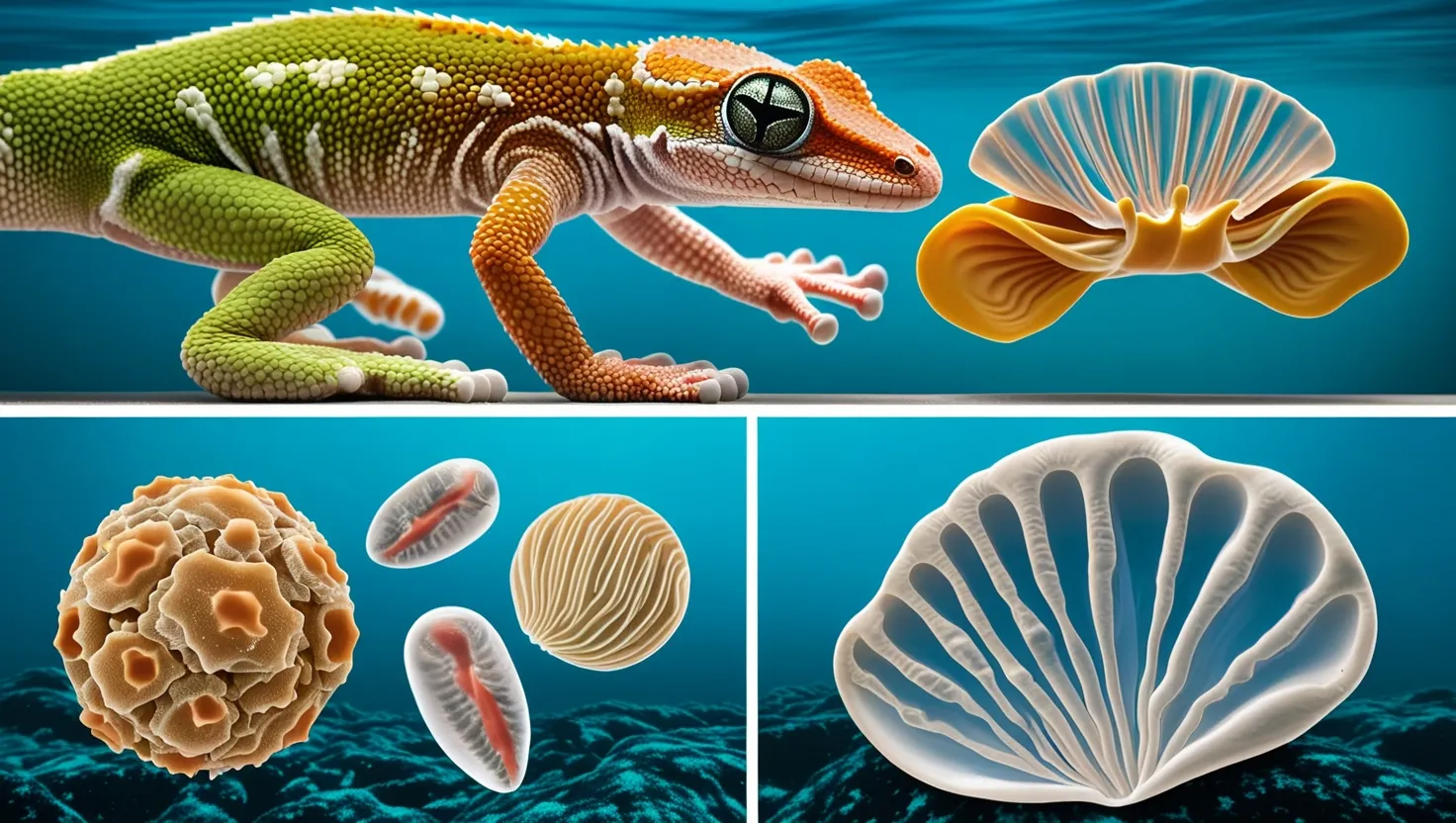In the vast and intricate world of nature, there are creatures that have evolved extraordinary adhesive properties, allowing them to thrive in diverse and often challenging environments. From the gecko’s ability to scale vertical walls to the mussel’s grip on underwater surfaces, these natural adhesives have inspired a new generation of scientists and engineers to develop biomimetic adhesives. These innovative materials are not only revolutionizing various industries but also offering sustainable and environmentally friendly alternatives to traditional synthetic adhesives.
Let’s start with one of the most fascinating examples: the gecko. These small lizards can climb walls and even ceilings with ease, thanks to the unique structure of their feet. The secret lies in the microscopic hair-like structures called setae on their toes. These setae create a large contact area with the surface, leveraging van der Waals forces to generate strong adhesion. Scientists have been studying this phenomenon closely, and as a result, they have developed artificial surfaces that mimic this dry adhesion mechanism. These biomimetic adhesives are now being used in various applications, including climbing robots and soft electronics, where the need for reversible and non-destructive adhesion is crucial.
Another remarkable example is the mussel, which can adhere strongly to underwater surfaces despite the challenging conditions. Mussels achieve this through a set of proteins known as mussel foot proteins (mfps), particularly mfp-5, which contains a high concentration of dopa. Dopa acts as a crucial adhesive primer, facilitating strong underwater adhesion. However, dopa is prone to oxidation, which could weaken the adhesive over time. To counter this, mussels have evolved mfp-6, which contains thiol groups that mitigate the oxidative effects and ensure durable adhesion. Researchers have replicated this mechanism to create artificial adhesives that can perform similarly in wet and underwater environments, opening up new possibilities in biomedical engineering, marine engineering, and other fields.
Plants also offer a wealth of inspiration for adhesive technologies. For instance, certain plants like ivy can attach strongly to buildings and other surfaces, thanks to their unique bioadhesive mechanisms. These plants use a combination of nanoparticles, pectin, and calcium ions to create a strong and durable bond. The nanoparticles penetrate surface irregularities, promoting intimate interactions with the substrate, while the calcium ions facilitate electrostatic binding. This natural adhesive system has been studied and replicated synthetically, providing biodegradable and sustainable alternatives to traditional wood adhesives, which often contain harmful chemicals like formaldehyde.
The development of these biomimetic adhesives is not just about mimicking nature; it’s also about understanding the fundamental principles behind natural adhesion. By delving into the micro- and nanostructures, as well as the chemical compositions of biological surfaces, scientists can design artificial surfaces with superior adhesion capabilities. For example, researchers have created capillary-based nanopillar arrays enveloped in thin layers of mucus, which mimic the adhesion mechanisms of certain insects and marine organisms. These arrays enhance the wetting behavior and promote strong adhesion on various surfaces.
One of the most significant advantages of biomimetic adhesives is their potential to replace traditional synthetic adhesives, which are often toxic and non-biodegradable. These new adhesives are not only environmentally friendly but also offer advanced properties such as rapid reversible adhesion, which is crucial in applications like medical sutures and wearable electronics. For instance, a new multifunctional hydrogel bio-glue has been developed using polyglutamic acid, tyramine hydrochloride, and tannic acid. This bio-glue not only provides strong adhesion to various tissues and wet materials but also offers anti-oxidation and hemostasis functions, making it highly promising for clinical applications.
The environmental benefits of these biomimetic adhesives cannot be overstated. Traditional adhesives are often made from non-renewable resources and can contribute to environmental pollution. In contrast, biomimetic adhesives are typically biodegradable and can be produced from renewable biomass. This shift towards sustainable adhesives aligns with global efforts to reduce environmental impact and promote sustainable development.
In addition to their environmental benefits, biomimetic adhesives are also transforming various industries. In the medical field, these adhesives are being used to develop new types of sutures and tissue repair materials that are less invasive and more effective. In construction, biomimetic adhesives could revolutionize the way we build, offering stronger, more durable, and sustainable bonding solutions. Even in the textile industry, these adhesives are being explored for their potential to create innovative, eco-friendly fabrics.
The journey of developing biomimetic adhesives is an ongoing one, with scientists continually discovering new mechanisms and improving existing technologies. For example, the development of stimulus-responsive smart adhesive surfaces is a recent advancement. These surfaces can change their adhesive properties in response to external stimuli, such as temperature or light, making them highly versatile and adaptable.
As we continue to explore and understand the intricate world of natural adhesives, we are not just mimicking nature; we are also learning from its ingenuity. The evolution of biomimetic adhesives is a testament to human curiosity and the drive to innovate. By embracing these nature-inspired solutions, we are not only advancing technology but also contributing to a more sustainable and environmentally conscious future.
In conclusion, the field of biomimetic adhesives is a vibrant and dynamic area of research that holds immense promise. From the gecko’s wall-climbing abilities to the mussel’s underwater grip, nature has provided us with a plethora of sticky solutions that are transforming industries and contributing to a more sustainable world. As we delve deeper into the secrets of natural adhesion, we are opening up new avenues for innovation and ensuring a brighter, more environmentally friendly future for generations to come.






